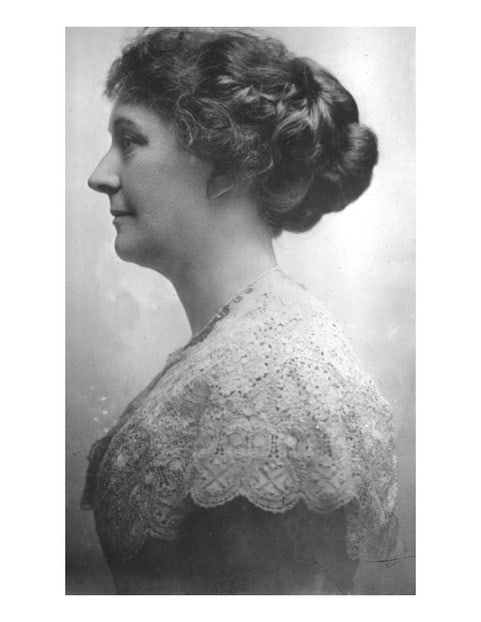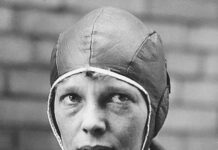
New York State Suffrage and National Women’s Republican leader Henrietta Livermore of Yonkers
By Mary Hoar, City of Yonkers Historian, President Emerita Yonkers Historical Society, recipient of the 2004 Key to History, Member of the Yonkers Landmarks Preservation Board, and President Untermyer Performing Arts Council
Monday, June 12th
June 12, 1940: Because of an inability to find additional room, a two-shift schedule at Saunders Trades School became imminent, a move the Yonkers Advisory Board for Vocational and Extension Education recommended as the very last resort. After reviewing the situation, the Board stated the “likelihood proper space be provided now seems remote.” The Board of Ed hoped WPA labor could be used to revamp the Elks Building for the Administrative offices occupying School Ten, but it was too late at this point.
June 12, 1945: After months of discussion and negotiation, Celanese Corporation finally told Mayor Curtiss Frank they weren’t buying twenty-two acres of the Grassy Sprain golf course to build a million-dollar research laboratory. When first proposed, area residents objected and Celanese had said they wouldn’t build if neighbors objected.
Tuesday, June 13th
June 13, 1943: The family of late US Senator Thomas Ewing of Ohio, presented a replica of the life-size bust of the late Mr. Ewing to Ohio University; the original graced their family home on Palisade Avenue for years. Ewing was first graduate of Ohio University and the first to earn a Bachelor of Arts degree in the Northwest Territory, he also raised the young man later known as Civil War General William Tecumseh Sherman!
June 13, 1945: After missing the 1944 edition because of the paper shortage, the Saunders yearbook “Technicraft” was the largest ever, partially because it included the Class of 1944 who sacrificed their yearbook for the war effort. Not only was it was dedicated to Machine Shop Teacher John Hodgart, it was a memorial to Captain Gustave Laffel, a former Saunders PE teacher and the first Yonkers teacher killed in action.
Wednesday, June 14th
June 14, 1923: Henrietta Livermore of Yonkers won a major victory when her resolutions calling for the Republican State Executive Committee to provide equal representation for women passed “without question” at their annual meeting. Livermore resigned as Chairman of the State Women’s Executive Committee, anticipating her election to the new position of Vice-Chairman of the State Committee.
June 14, 1945: Lawrence Tierney of Bronx River Road, Chief of the NYC Aqueduct Police Force, sent word from Hollywood his son Larry, who played the title role in the movie Dillinger, was offered a feature role in the RKO film “Deadline at Dawn,” with Paul Lukas and Susan Hayward. His brother Gerard, later known professionally as Scott Brady, moved to California after his discharge from the US Navy in 1946. Gerard also appeared in movies, television and on stage.
Thursday, June 15th
June 15, 1923: While at a meeting in Buffalo, Yonkers Fire Chief James Mulcahey received news his nephew had been arrested for turning in false alarms! After Mulcahey got over his shock, he said the law would “have to take its course,” then added, “I’d wallop him myself if I had caught him.”
June 15, 1943: The Yonkers Women’s Army Corps recruiting campaign was kicked off with a bang! An Army trailer filled with WACs arrived in Getty Square; the women not only gave information and answered questions, they interviewed women and enlisted them on the spot.
Friday, June 16th
June 16, 1931: A delegation of Riverdale residents presented a petition at City Hall asking Yonkers annex Riverdale to Yonkers and Riverdale and Yonkers residents had “many things in common.”
June 16, 1935: Nineth Ward Alderman William Slater upgraded his battle against the “nudism” of New York City women on their way to Tibbetts Brook Park wearing shorts he considered inappropriate for the streets of McLean Heights and Lincoln Park; he filmed the women on his “McLean Avenue battlefront” and gave the evidence to police. Five women were given summonses as spectators and photographers watched.
Saturday, June 17th
June 17, 1933: A Federal Grand Jury started the task of investigating how Max Greenberg, the murdered New Jersey beer baron, got a Yonkers gun permit in 1929.
June 17, 1935: New York press photographers attended Judge Martin Fay’s court to witness hearings for the five women who received summonses for wearing shorts on the streets of Yonkers. He sternly lectured four of the women and told them “…to wear what people in Yonkers wear if you want to walk through our streets.” Fay then discharged them with a warning after Slater did not sign a formal complaint; the Alderman believed the court appearance would teach the women a lesson. The fifth girl called Slater the night before and told him she would lose her job if she missed a day. Slater’s movies were not shown in court.
Sunday, June 18th
June 18, 1935: Although Ninth Ward Alderman William Slater again took up the banner for decency in female hiking wear, the Common Council refused to pass a resolution proposed by Alderman William Slater. He wanted the Corporation Counsel to draft a law “regulating the dress and attire of persons appearing on the streets in scanty costumes that offend the sense of propriety of the average normal person.” Much to the relief of Corporation Counsel Leonard McAneny, the Council’s action relieved him of the duty of deciding what women in Yonkers could wear on our streets.
June 18, 1936: Although the Federal Government allocated enough money to run all collegiate centers in NY State, the fate of Yonkers College still was in question. The Board of Regents had some reservations, purportedly caused by a lack of facilities at the center… and the claim of private colleges the collegiate centers deprived them of students.
Questions or comments? Email YonkersHistory1646@gmail.com. For information on the Yonkers Historical Society, Sherwood House and upcoming events, please visit our website www.yonkershistoricalsociety.org, call 914-961-8940 or email info@yonkershistoricalsociety.org





